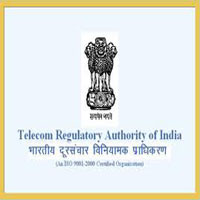  In order to contain the green houses gases released by telecom towers and give an impetus to renewable energy in the telecom sector, the Telecom Regulatory Authority of India (TRAI) has said that least 50% of all rural towers and 20% of the urban towers will run on hybrid power (Renewable Energy Technologies (RET) + Grid power) by 2015. This will be further raised by 25 percent and 13 percent urban and rural areas respectively by 2020.
TRAI on Friday said that its recommendations on ‘Approach towards Green Telecommunications’ which was a part of its global committment towards containing GHG and carbon emissions have been accepted by the government.
According to an estimate India has more than 3,75,000 telecom towers. Around 20% of these are located in areas away from the grid. These towers run diesel generator for around 18-20 hours a day and use batteries for rest of the time. Further 20-25% of telecom towers are in areas with unreliable grid availability. The telecom towers in unreliable grid areas operate on grid power for 8-10 hours, on diesel for 8-10 hours and on batteries for the remaining hours.
With the current rate of growth, the GHG emissions from Telecom towers are expected to increase from 22.83 MtCO2e in 2009 to 48.39 MtCO2e in 2012.
According to new guidelines issued to the manufacturers and service providers all telecom products, equipments and services in the telecom network should be certified “Green Passport (GP) by the year 2015.
“Telecommunication Engineering Centre will certify telecom products, equipments and services on the basis of ECR ratings”, TRAI said.
The new directions will make it mandatory for all service providers disclose declare to TRAI, the carbon footprint of their network operations.
“The Declaration of the carbon footprints should be done twice in a year.” Not only this, according to the news guidelines service providers will adopt a Voluntary Code of Practice for energy efficient network planning, infra-sharing, deployment of energy efficient technologies and adoption of Renewable Energy Technology (RET) to reduce carbon footprints.
Under ‘Carbon Credit Policy’ in line with carbon credit norms, a maximum of 50% over the carbon footprint levels of the Base Year (2011) in rural areas and 2 achieving a maximum of 66% over the carbon footprint levels of the Base Year in urban areas will be achieved by the year 2020.
TRAI has also asked the service providers to set the yearly target for carbon emission reduction. They will at aim at 5% by the year 2012-2013, 8% by the year 2014-2015, 12% by the year 2016-2017 and 17% by the year 2018-2019.
TRAI had, in April 2011, given its recommendations on “Approach Towards Green Telecommunications. |